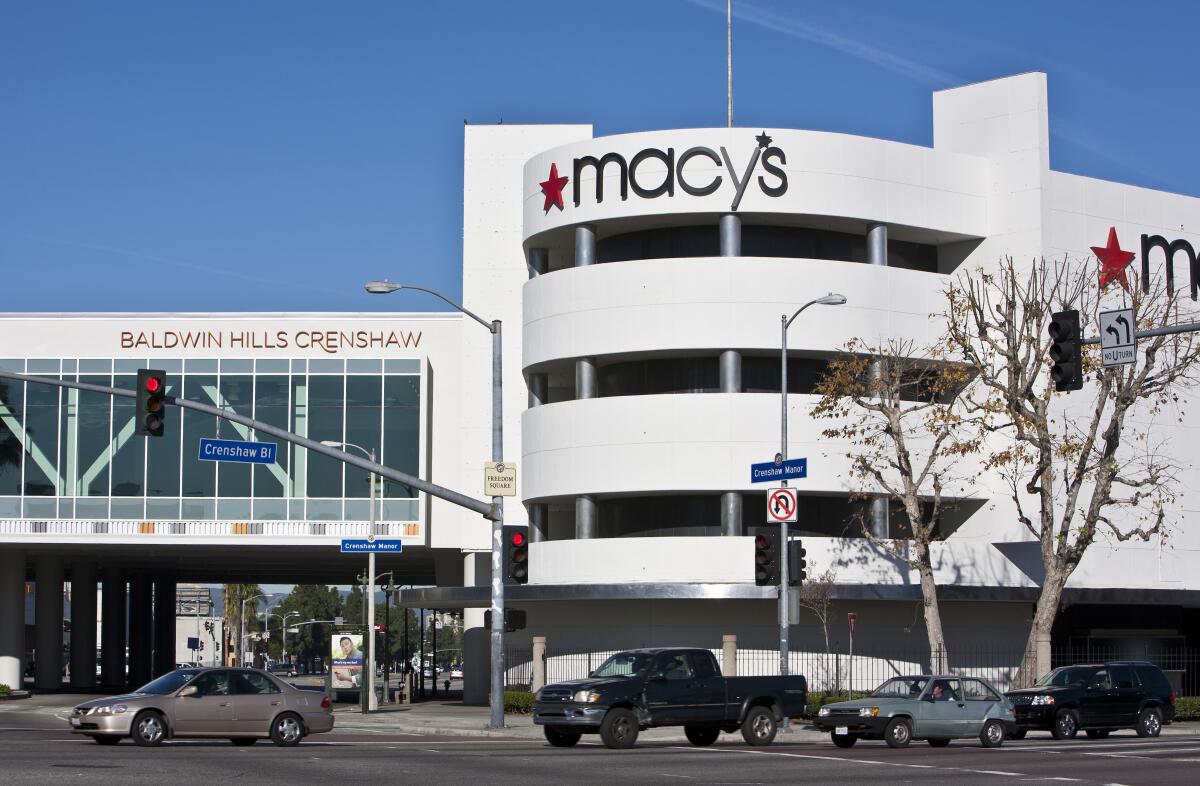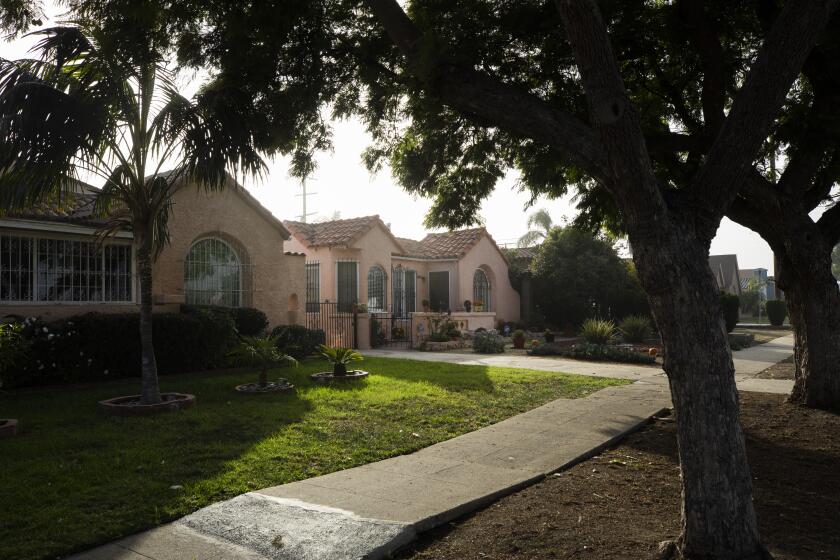Op-Ed: The undeniable loss of ‘my Macy’s’

The Macy’s at Baldwin Hills Crenshaw Plaza has fought an uphill battle to survive ever since the 1992 unrest over the acquittal of the police officers who beat Rodney King, events that threw the future of redevelopment in Black neighborhoods into chronic uncertainty. But in the bigger context of Black struggle, the precariousness of Macy’s was normal. Struggle is a part of many aspects of Black life, especially those that cater to the modest luxuries of the middle class. Despite this reality, I was optimistic about this Macy’s survival. There was reason to hope: As the only remaining department store proper in the Crenshaw area, home to the biggest Black middle class west of the Mississippi, it had a place here.
But in struggle, nothing is sacred. Two weeks ago, Macy’s announced the closure of four stores nationwide, including Baldwin Hills. And while brick-and-mortar retailers have been shuttering for years, decimated by online shopping and shifting consumer tastes, the closure feels like a bombshell. The demise of this Macy’s is the official end of an era that began in 1947, when the nation’s first open-air mall featuring May Co. and The Broadway (both of which eventually were bought by Macy’s) inaugurated a key part of the American good life, L.A. style.
Even through Crenshaw’s dramatic demographic shift from mostly white to mostly Black, the mall — and notably the art-deco style Broadway, shaped like a cruise ship and topped with a spire — remained a towering symbol of middle-class aspiration. When the mall was reconstructed in 1989, the original anchor stores remained intact. When the city burned a few years later and the community was abuzz with discussions about what retailers it wanted to see as it rebuilt, the bottom line was what it had always been: Black shoppers wanted the same quality goods and services readily available in other neighborhoods.
Our house off Slauson Avenue could go for double what we paid for it. Yet my husband and I have dreams for our family — and this neighborhood.
But here was the rub. There was always grumbling amongst local residents that the Crenshaw Macy’s wasn’t the same as the Macy’s on the Westside, Pasadena or in the South Bay. At Baldwin Hills, you couldn’t get the highest-end clothing brands or a selection of men’s suits. The idea that chain stores are all more or less alike, affirming that everyone at any location is part of the same consumer zeitgeist, is the heart of their appeal. But Black people have always endured what I call retail racism, meaning that the offerings at their local chain-store outlet are not going to be as diverse as those in neighborhoods whose populations are not mostly Black. Baldwin Hills always suffered from that lesser-than reputation, even while remaining a symbol of validation.
The inequality didn’t deter me. I liked the stock the Baldwin Hills Macy’s did have and was satisfied with many a purchase.
The fact is, this Macy’s was special — not like the others, but in a positive way. The third level housed the Museum of African American Art, founded by the renowned artist Samella Lewis in 1976. Its meeting rooms held classes for seniors, one of which was a very lively current events discussion group I ran for a while. A friend of mine who lives in Leimert Park always called it “my Macy’s,” and it was true. Rather than browse in isolation there, I talked to other customers, swapped notes. The makeup counter was especially communal, where things were equal and then some — it had Lancôme and Mac, plus lines formulated for Black women’s skin tones and aesthetics. The sense that Black beauty was actually being centered in a mainstream setting on a daily basis, years before the concept became something to aspire to, was heady.
Alexandra Lange’s accessible history, ‘Meet Me by the Fountain,’ looks at how malls remain relevant in part by going beyond the white middle class.
But things were on a downward spiral that would likely not be reversed. Traditional department stores throughout the 1990s and 2000s fell prey to closures, merging and consolidation, which is what happened to both anchors. The mall’s original Broadway morphed into Macy’s and eventually wound up a Walmart (which closed in 2016); May Co. became Robinsons-May before also becoming a Macy’s.
Then there were the escalators. At the Baldwin Hills Macy’s, they broke down again and again — a cycle that reflected the economic stagnation in Crenshaw and neighboring South Central. The struggle that had felt somewhat abstract while I patronized this Macy’s started to intrude into a place that was supposed to reassure Black people that we were indeed part of the middle class. I started to resent the long minutes waiting for a creaky old elevator. It was hard to hold back the thought, I should go somewhere else. Sometimes I did. But I never abandoned the Baldwin Hills Macy’s, never thought of not going back.
Now there will be nowhere to go back to. In an era of epic racial crises, the closure of a Macy’s may not seem like a crisis at all. It may not even look like struggle. But its disappearance is an undeniable loss that many Black people — middle class and not — will feel for a long time.
Erin Aubry Kaplan is a contributing writer to Opinion.
More to Read
A cure for the common opinion
Get thought-provoking perspectives with our weekly newsletter.
You may occasionally receive promotional content from the Los Angeles Times.











